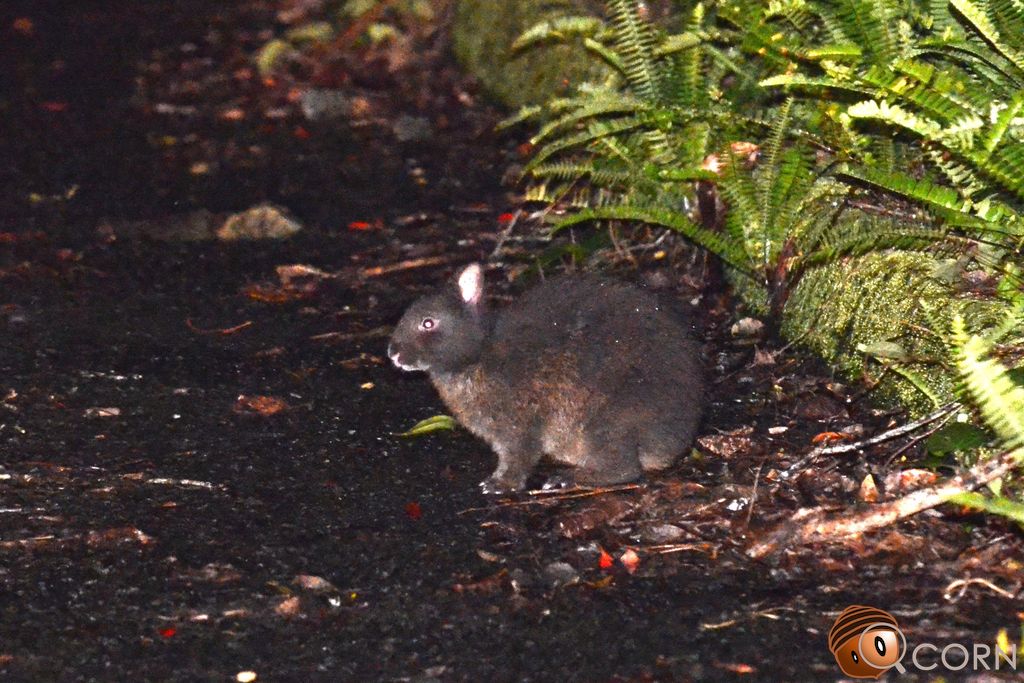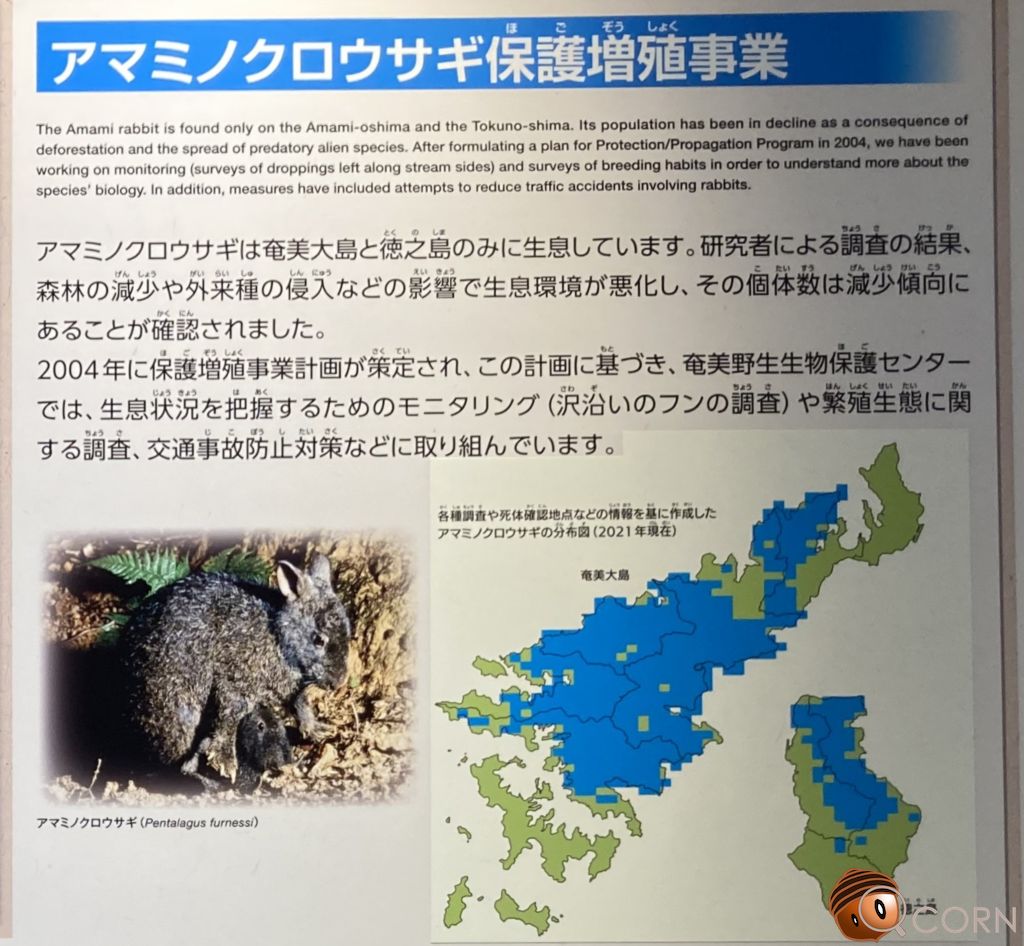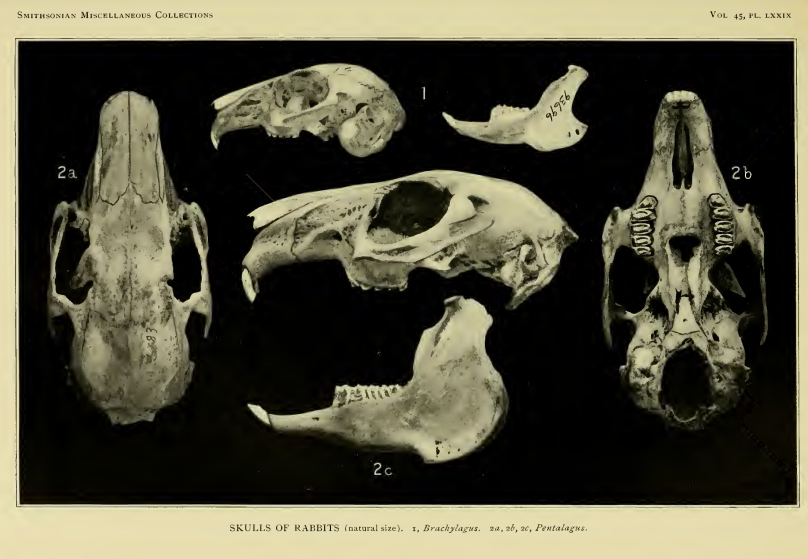Pentalagus furnessi
Japanese Name: アマミノクロウサギ
Chinese Name: 奄美黑兔、琉球兔、奄美短耳兔
English Name: Amami Rabbit
Origin: Tokunoshima, Amami Oshima
The Amami Rabbit is the only species of the genus Pentalagus. It has short ears and strong claws adapted for digging. This species is endemic to Tokunoshima and Amami Oshima. It is nocturnal and feeds on a wide variety of plants.
The closest known relatives of Pentalagus belong to the extinct genus Pliopentalagus, with three extinct species identified from the Pliocene of Anhui Province, China: Pl. huainanensis, Pl. dajushanensis, and Pl. anhuiensis.

Thanks to conservation measures such as the removal of invasive species, the population of the Amami Rabbit has stabilized. Observing one in the wild is no longer considered difficult. The figure below comes from the Ministry of the Environment’s Amami Wildlife Conservation Center, showing a distribution map based on fecal surveys, indicating a broad range. As of February 2023, the population was estimated at around 20,000 individuals.

The genus name Pentalagus means “rabbit with five molars,” based on the holotype specimen, which had five upper molars on each side. In contrast, modern rabbits usually have six upper molars per side—including the Amami Rabbit.
References:
Amami Wildlife Conservation Center Newsletter “Amami no Kaze Dayori”, Issue 40, 2011/3/31
https://ja.wikipedia.org/wiki/アマミノクロウサギ


Additional References:
Lyon, Marcus Ward, Jr. Classification of the Hares and Their Allies. Smithsonian Miscellaneous Collections, vol. 45, no. 2, 1904, pp. 321–447.
